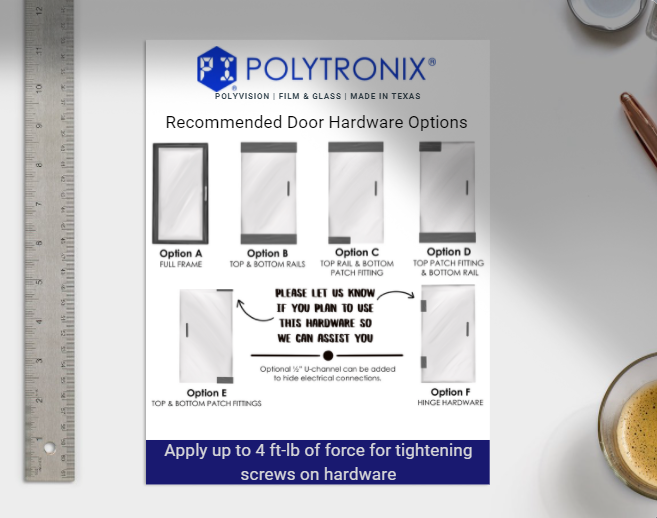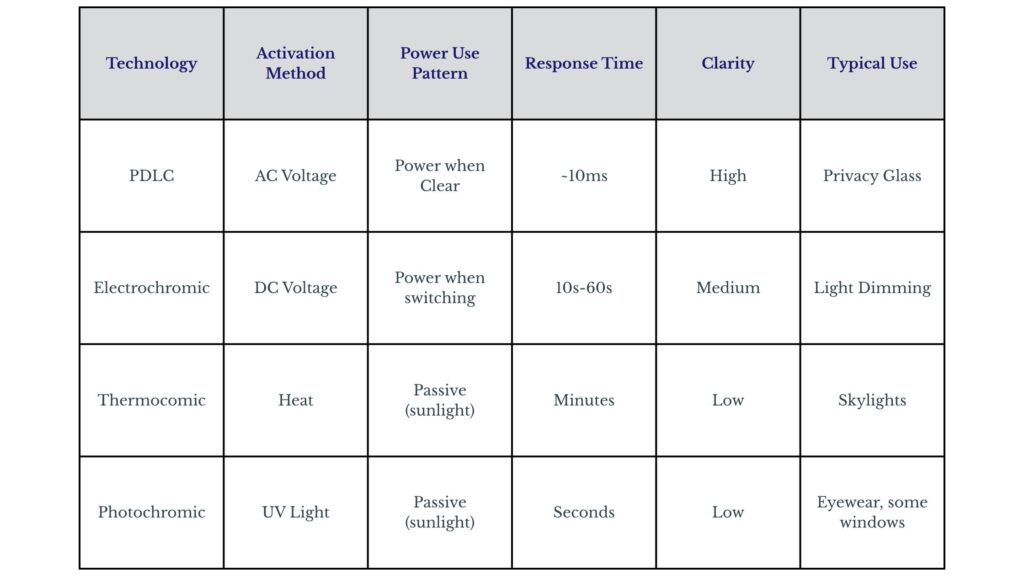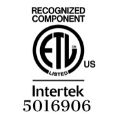Switchable glass technology, often known as smart glass or privacy glass, delivers both energy efficiency and on-demand spatial privacy primarily through its use of an electrically controlled film, most commonly Polymer Dispersed Liquid Crystal (PDLC) technology, which allows it to dynamically control light transmission and opacity.
On-Demand Spatial Privacy
Spatial privacy is achieved instantaneously by controlling the state of the liquid crystals within the PDLC film.
- Mechanism (PDLC): The PDLC film consists of micron-sized droplets of nematic liquid crystals suspended within a polymer matrix, sandwiched between two transparent conductive layers.
- Opaque State (Privacy): When the electric current (AC voltage) is turned off (the “off state”), the liquid crystals are randomly oriented. This causes isotropic light scattering because the refractive index of the liquid crystal droplets differs from that of the polymer, resulting in a frosted, diffused glass appearance that shields the space from view. The glass can transition from transparent to opaque (cloudy-white) instantly.
- Transparent State (Openness): When an electric current is applied to the glass (the “on state”), the liquid crystal molecules align with the electric field. This alignment matches the refractive index of the polymer matrix, allowing light to pass through with minimal scattering, rendering the glass transparent.
- Control: This allows users to effortlessly switch between transparent and opaque modes using a simple command, a switch, a remote control, a motion detector, a home automation system, or a smart device app. The response time for this transition is rapid, typically less than 80 milliseconds at room temperature.
This capability eliminates the need for traditional solutions like blinds or curtains, while providing instant privacy.
Energy Efficiency
Switchable glass enhances energy efficiency by managing solar heat gain, UV radiation, and optimizing natural daylight use.
- Reducing Cooling Demands (Heat Control): When the glass is in its opaque state, it reduces the amount of heat and UV radiation entering the space. By controlling the amount of sunlight entering, the heat gain is minimized, which results in reduced cooling requirements and lower energy consumption from air conditioning. The Solar Heat Gain Coefficient for the glass in the translucent state is less than 0.10.
- Protection from Harmful Radiation: Smart glass inherently filters out harmful radiation, protecting interiors and occupants. It blocks up to 99% of harmful UV rays and up to 70% to 73% of infrared radiation when opaque. This UV protection also prolongs the lifespan of belongings, such as furniture, by preventing fading.
- Optimizing Natural Light: Switchable glass allows natural daylight to be effectively utilized by adjusting the transparency of the glass. Even in its frosted or opaque state, the glass allows natural light to pass through. This reduces the need for artificial lighting during the day, which helps save energy.
- Low Power Consumption: Although continuous power is required to maintain the transparent state, the energy demand is minimal, typically around 3–6 W/m². Power is only necessary to maintain the clear state, not to switch the state.
The result is a versatile solution that enables both security and confidentiality on demand, while simultaneously reducing energy bills and contributing to sustainable building practices.









